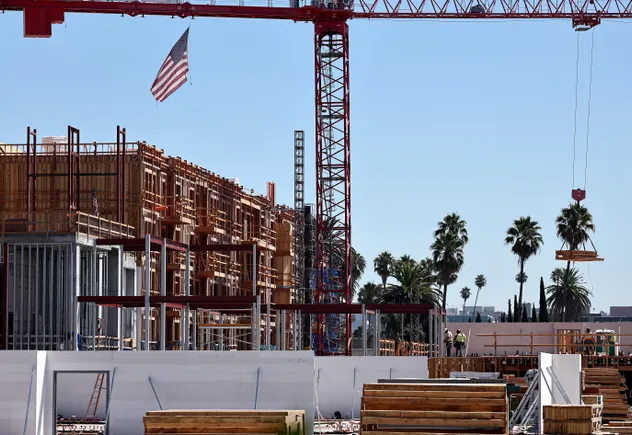Dive Brief:
- Nonresidential construction spending decreased 0.2% in July to a seasonally adjusted annual rate of $1.21 trillion, according to Associated Builders and Contractors’ analysis of U.S. Census Bureau data released Tuesday.
- The drop marks the second consecutive month of decline, though the level remains just 0.4% below the all-time high established in May, said Anirban Basu, ABC chief economist.
- “While Hurricane Beryl, which interrupted construction activity along the Gulf Coast in early July, contributed to the month’s weak construction spending data, the cumulative effect of high interest rates likely bears more blame,” said Basu in the release. “This is particularly true for nonresidential spending in the private sector, which fell 0.4% for the month and is up just 4.5% over the past year.”
Dive Insight:
Labor shortages, along with macroeconomic headwinds, continue to negatively impact construction momentum, according to an Associated General Contractors of America report.
For example, about 94% of firms with openings for hourly craft workers reported difficulty filling those positions, according to a recent AGC and Arcoro workforce survey. That is an increase from the 88% of firms that reported difficulty in the association’s 2023 survey.
“Nearly all spending categories show increases from a year ago but have fluctuated in recent months,” said Ken Simonson, AGC chief economist. “Our workforce survey suggests this pattern is due in part to a worsening shortage of qualified workers.”
Spending decreased on a monthly basis in 11 of the 16 nonresidential subcategories, according to the U.S. Census Bureau data. Private nonresidential spending dipped 0.4%, while public nonresidential construction spending ticked up 0.2% in July.
The ongoing economic challenges have also tempered expectations for future growth, with many contractors feeling the pressure of lingering high interest rates.
“Less than half of contractors expect their sales to increase over the next six months, according to ABC’s Construction Confidence Index, a clear indication that the industry is eagerly awaiting lower interest rates,” said Basu. “Fortunately, it’s all but certain that the Federal Reserve will begin lowering interest rates at its September meeting. The remaining question is whether it will be a 25- or 50-basis point cut.”

